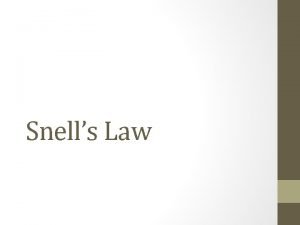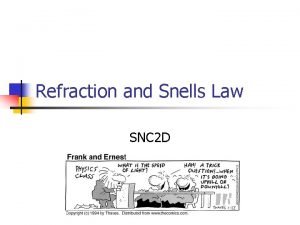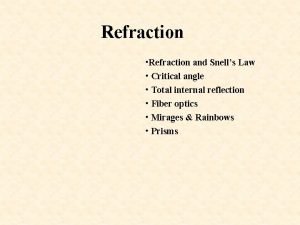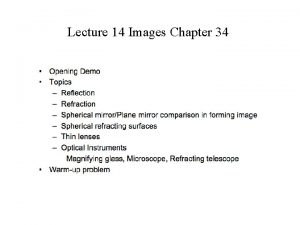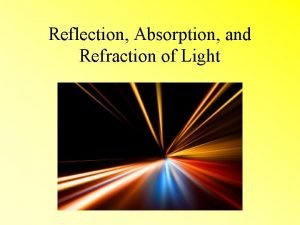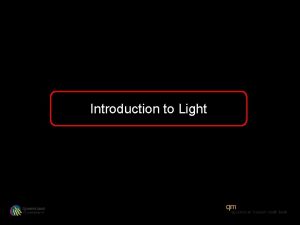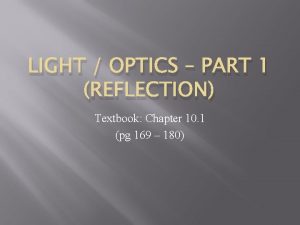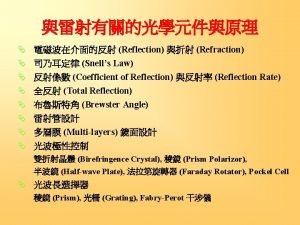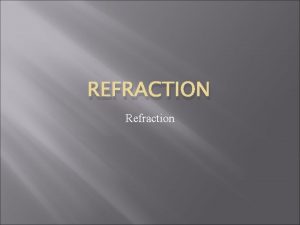Color Polarization Reflection and Refraction Snells Law Fundamentals












- Slides: 12

Color Polarization Reflection and Refraction Snell’s Law….

Fundamentals of Light • Objects that are transparent allow light to pass through them. • The atoms absorb and transmit the light so it passes through the material. • Objects that are opaque do not let light pass through them. • The atoms in these materials absorb the light as kinetic energy instead of letting it pass through.

Fundamentals of Light • Transverse waves can oscillate up and down, or left and right. • The wave is therefore said to be polarized in that direction • The polarization depends on the direction of vibration the electron has. Vertically oscillating electron = vertically oscillating photon • Sunglasses can filter out light of a particular polarization, making it dimmer

Fundamentals of Light • Polarized light have vibrations that occur in one plane (vertical or horizontal), non polarized light has light which has multiple types of polarization • 3 D glasses have lenses with different polarizations, which creates the illusion of 3 D images!

Color • When you put sunlight into a triangular-shaped glass, you can break up the light into a spread of colors of the spectrum. • White color is a combination of all colors. Black color is the absence of color.

Color • The atoms an object is made of reflect or absorb particular wavelengths, this is what gives an object color.

Color • Some types of glass can only transmit one wavelength of color. • Example: blue colored glass will absorb all other colors and transmit blue light.

Reflection and Refraction • When a light ray strikes a reflecting surface, the angle of reflection is equal to the angle of incidence. • The change in direction or bending of light at the boundary from one medium to another is called refraction.

Reflection and Refraction • Refraction only occurs when the angle of incidence is not straight onto the surface of the new medium. If θ 1 is 0, there is no refraction. • Once the light ray is in a new medium, the speed of light can slow down.

Reflection and Refraction •

Reflection and Refraction • Here is a table of values for the index of refraction (n): • n is unit less

Reflection and Refraction • Do the 3 problems on the worksheet. I made them for you • Homework will be assigned on Tuesday
 Law of optics
Law of optics Snell law
Snell law What is critical angle in refraction
What is critical angle in refraction Snells law
Snells law Chapter 29 reflection and refraction
Chapter 29 reflection and refraction Refraction of sound
Refraction of sound Reaction poem
Reaction poem Partial reflection and refraction examples
Partial reflection and refraction examples Reflection refraction absorption transmission
Reflection refraction absorption transmission Bill nye light optics
Bill nye light optics William ernest henley invictus
William ernest henley invictus Introduction of light reflection and refraction
Introduction of light reflection and refraction Bill nye light optics worksheet
Bill nye light optics worksheet
